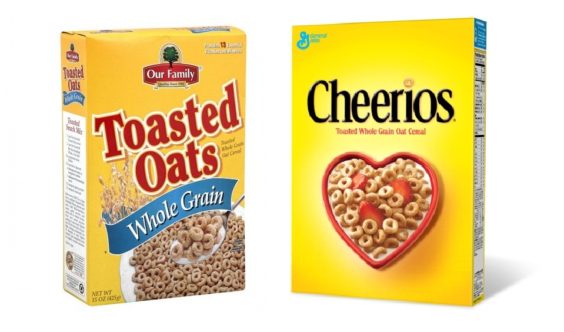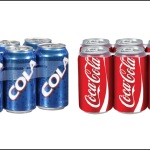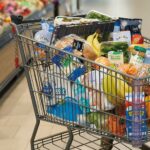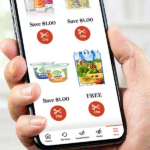
You’ve heard the arguments before from non-couponers – some think they can save plenty just by buying store-brand items and not bothering with coupons at all. Couponers would say that you can save much more on national brands, if you shop the sales and use coupons strategically. But now a new study that compares private-label purchases with their brand-name equivalents actually takes coupons and sales into account – and their findings may surprise you.
Or maybe it won’t surprise you, when you learn that the study was conducted by the Private Label Manufacturers Association. Yes, they found that a selection of store-brand products would save shoppers an average of 30%. But their methodology is noteworthy: “For every category, a leading national brand was compared to a similar store brand product and prices were adjusted to account for all known discounts, coupons and promotions available.”
So we’d still spend 30% more on national brands, even AFTER using coupons and buying items when they’re on sale? Hmmm.
Sale prices and any other “known discounts and coupons were applied, based on coupons that were distributed during the course of the study in a local major daily newspaper, as well as circulars available inside the store,” the PLMA’s Dane Twining explained to Coupons in the News. This particular pricing survey focused on items that might make up a typical shopper’s “winter grocery list”, including cold-weather foods and medicine. Items were priced throughout the month of January at an unnamed “typical supermarket located in the northeast.” Prices were then averaged across the four weeks and tallied up, to determine how much a shopper would have spent on national-brand items, versus their private-label counterparts.
And here’s what they found:
| FOOD ITEMS | National Brand Price | Store Brand Price |
| American cheese singles (Kraft) | $5.29 | $3.99 |
| Butter (Land-O-Lakes) | $4.27 | $2.12 |
| Canned corn (Del Monte) | $1.00 | $0.75 |
| Cereal (Cheerios) | $3.49 | $2.50 |
| Chili (Hormel) | $1.67 | $1.49 |
| Cookies (Oreos) | $3.87 | $2.62 |
| Grape Jelly (Smuckers) | $2.99 | $1.72 |
| Green beans (Del Monte) | $1.00 | $0.75 |
| Hot chocolate (Swiss Miss) | $4.29 | $2.29 |
| Ketchup (Heinz) | $1.99 | $1.34 |
| Macaroni & Cheese (Kraft) | $1.15 | $0.60 |
| Mustard (French’s) | $1.39 | $0.99 |
| Oatmeal (Quaker) | $2.88 | $2.59 |
| Orange juice (Florida’s Natural) | $3.25 | $2.72 |
| Peanut Butter (Jif) | $3.49 | $2.84 |
| Pasta (Ronzoni) | $1.45 | $1.00 |
| Pasta sauce (Ragu) | $1.99 | $1.40 |
| Saltines (Nabisco) | $2.82 | $2.00 |
| Sandwich bread / white (Sara Lee) | $2.99 | $1.14 |
| Soda 12pk cans (Pepsi) | $3.94 | $3.00 |
| Tomato soup (Campbells) | $0.87 | $0.69 |
| NON FOOD ITEMS | National Brand Price | Store Brand Price |
| Aluminum foil (Reynolds) | $3.74 | $3.00 |
| Antacids (Tums) | $4.99 | $3.49 |
| Aspirin (Bayer) | $6.49 | $4.39 |
| Body lotion (Jergens) | $6.79 | $4.34 |
| Childrens vitamins (Flintstones) | $6.99 | $5.49 |
| Daytime Cold medicine (Vicks) | $6.99 | $4.89 |
| Cough syrup (Mucinex) | $7.48 | $6.39 |
| Dry cat food (Purina) | $4.97 | $3.89 |
| Facial tissues (Scotties) | $1.49 | $1.04 |
| Mouthwash (Listerine) | $5.57 | $3.86 |
| Napkins (Vanity Fair) | $2.59 | $1.99 |
| Nighttime cold medicine (Vicks) | $7.49 | $5.59 |
| Sinus Spray (Afrin) | $8.49 | $3.99 |
| Toilet paper (Scott) | $5.29 | $3.99 |
| AVERAGE TOTAL | $131.17 | $91.68 |
So even after using coupons and accounting for sales, the $131 worth of name-brand items was reduced to $91 when the store-brand equivalents were purchased.
But a closer look reveals some missed opportunities for savings. The PLMA couldn’t publicly reveal the name of the store where the prices were gathered, but it shared that information with Coupons in the News for comparative purposes. And a look at that store’s sale prices and available coupons during the month of January shows a few flaws in the system.
Cheerios, for example, were on sale for $2.50 one week, and there was a printable coupon available that would have knocked the price down to $1.75 – less than the store-brand equivalent. While the study attempts to account for available coupons, it doesn’t include available printable coupons. And because prices over the four weeks are averaged together, the study minimizes the savings that one week’s sale combined with coupons can provide. An actual savvy shopper would be unlikely to buy Cheerios four weeks in a row, three of them at full price – instead, it’s more likely that shopper would stock up and buy several boxes the week they were on sale.
The same was true of other products like Oreos and Campbells soup, which could have been purchased for much less, during one out of the four weeks. Plus, another brand of chili was on sale at one point, for much less than either Hormel or the store brand, and a doubled coupon would have made it just $0.45. So a shopper who had coupons ready, and stocked up when an item went on sale, could have saved much more on national brands after all.
“This is not being offered as a rigorous or scientific survey,” the PLMA’s Twining allowed, “but only a benchmark of savings that an average shopper may encounter if they favor the retailer’s brand.” Indeed, Twining explained, “we feel this approach represents how most people shop.” He cites a recent PLMA survey that found 27% said they “always” save up coupons and/or watch their stores’ ads, and 21% said they did so “frequently.” But a majority said they only use coupons and shop the sales “occasionally” (24%), “rarely” (11%) or “never” (18%).
So can you save more by buying national brands and taking advantage of coupons and sales? Yes. Can the average shopper save more by buying store-brand items instead? Yes. Much like the everyday low prices touted by some stores, the everyday low prices of private-label products are of particular appeal to people who don’t do coupons. They also come in handy for couponers who need an item in a pinch, and know that a full-priced store brand will invariably cost less than a full-priced name brand.
While touting the benefits of private label, Twining does offer a tip of the hat to couponers. The study may show that a typical shopper could save 30% with private-label products, he tells Coupons in the News, but it does not “show the total savings a shopper might be able to pocket if they aggressively pursue coupon savings via all the avenues covered in a website such as yours.”
So buy private label products if you’d like, but if you really want to save – keep on clipping those coupons.
You may also like:
Store Brands or Coupons? The Better Bargain May Surprise You
Suspicious Shoppers Question Whether Store Brands Are Really Worth It
We Started Buying Store Brands Because We Had To. We’re Still Buying Store Brands Because We Want To.
As Grocery Costs Increase, Coupon Use Rises For The Second Straight Year











Pingback: Interesting Reads: store brand vs. brand name, homemade mixes, free Starbucks coffee and more | Green Bay Consumer
Ha they obviously didn’t account for stores that offer double coupons or their own store coupons that can be combined with manufacturer coupons. Just looking at this week’s Target deal…under a quarter for General Mills cereals when you combine store, MFR coupons and the gift card offer…